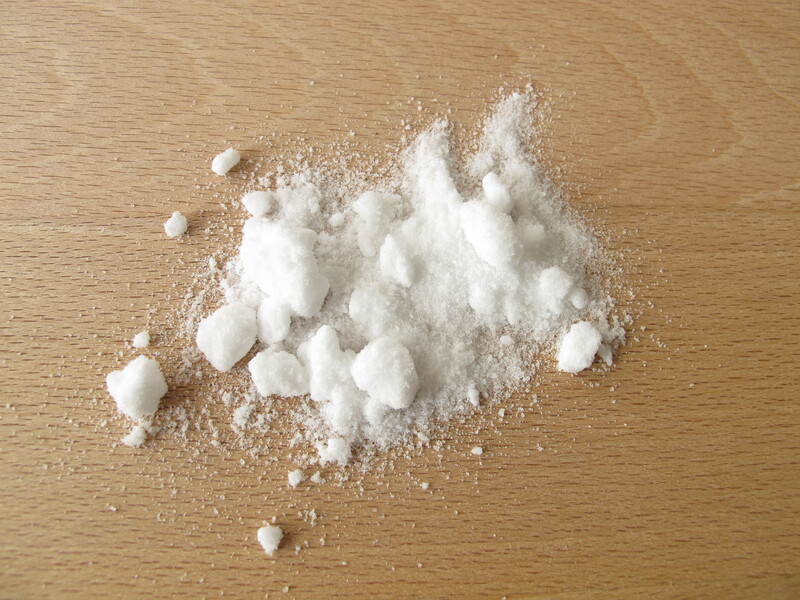Exploring the Potential of Steam in Leather Sofa Maintenance
Posted on 18/05/2025
Exploring the Potential of Steam in Leather Sofa Maintenance
Leather sofas are an epitome of elegance and comfort in any household. However, maintaining them can be challenging due to their sensitive material. Among various cleaning methods, steam cleaning has gained popularity for its efficiency and eco-friendliness. In this comprehensive guide, we delve into the potential of steam in leather sofa maintenance, exploring its benefits, risks, best practices, and alternatives. Whether you're a homeowner or a professional cleaner, understanding the nuances of leather sofa steam care is crucial for prolonging the lifespan and beauty of your prized furniture.
Understanding Leather: Types and Sensitivity
To effectively maintain a leather sofa, it's essential to recognize the various types of leather and their unique characteristics. The most common forms found in sofas include:
- Aniline Leather: Highly natural and soft; absorbs moisture easily and is more vulnerable to stains and moisture compared to others.
- Semi-Aniline Leather: Slightly coated for improved durability, but retains much of the natural feel.
- Protected (Pigmented) Leather: Treated with a polymer coating for better resistance to stains and moisture.
- Nubuck and Suede: Highly porous and delicate, requiring specialized maintenance.
Steam interacts with each type differently, so understanding your sofa's material is crucial before proceeding with leather sofa steam cleaning.

The Science Behind Steam Cleaning Leather Sofas
Steam cleaning works by producing hot vapor that loosens dirt, kills bacteria, and lifts stains without relying on harsh chemicals. For leather sofa maintenance, steam offers specific advantages:
- Sanitization: High temperatures eliminate bacteria, viruses, and dust mites on the leather's surface.
- Eco-Friendly: Utilizes only water, avoiding any chemical residue that could harm leather.
- Stain Lifting: Heat softens certain stains, making them easier to wipe away.
- Deodorizing: Steam neutralizes unpleasant smells embedded in leather fibers.
Despite these benefits, there are notable caveats, as excessive heat and moisture can damage the leather's finish, fade color, and promote mold growth if not managed properly.
Key Benefits of Steam in Leather Sofa Care
1. Deep Cleaning without Chemicals
Leather is sensitive to harsh detergents, which can strip its natural oils and lead to cracking or drying. Steam cleaning for leather sofas uses pure water vapor, providing a deep clean with zero chemical exposure.
2. Allergen and Germ Elimination
Steam penetrates the leather's surface, helping to eradicate germs, dust mites, and potential allergens. This is particularly valuable for households with children or pets.
3. Revitalizing Appearance
Properly applied, steam can revive the suppleness and shine of leather by opening its pores, allowing it to "breathe" and regain its natural texture.
4. Quick Drying Time
Since steam uses minimal moisture, leather dries faster than it would with traditional wet cleaning methods, reducing the risk of mildew and water spots.
Risks and Precautions When Using Steam on Leather Sofas
Despite its advantages, leather steam cleaning comes with certain potential drawbacks. Before beginning, consider these essential precautions:
- Avoid Over-Saturation: Too much steam can saturate the leather, leading to warping, hardening, or discoloration.
- Select Appropriate Temperature: High heat may burn or shrink the leather's surface, especially in delicate types like aniline or suede.
- Test on an Inconspicuous Area: Always start with a hidden spot to ensure there's no adverse reaction.
- Follow Manufacturer's Guidelines: Many sofa manufacturers explicitly state if steam cleaning is safe for their products.
In summary, while exploring the potential of steam in your leather sofa upkeep, take a cautious, tailored approach, especially for natural and unprotected leathers.
Step-by-Step Guide: How to Steam Clean Your Leather Sofa
Ready to unveil the full potential of steam in maintaining your leather sofa? Follow these comprehensive steps for safe, effective cleaning:
-
Assess Your Leather Type:
- Identify if your sofa is made of protected, semi-aniline, or pure aniline leather.
- Consult the manufacturer's care tag or manual if uncertain.
-
Vacuum Thoroughly:
- Remove dust, hair, and debris with a soft brush or handheld vacuum.
- Payspecial attentionto seams and crevices.
-
Pre-Treat Stains:
- Spot-treat stubborn stains with a leather-safe cleaner and a microfiber cloth.
- Avoid using alcohol, bleach, or general-purpose cleaners.
-
Prepare the Steam Cleaner:
- Use a steam cleaner with an upholstery or delicate surface attachment.
- Fill with distilled water (to prevent mineral residue).
- Adjust to the lowest steam setting available.
-
Test in a Small Area:
- Apply steam to a hidden section of the sofa for about 10 seconds.
- Check for any discoloration, distortion, or texture change after drying.
-
Steam Clean the Sofa:
- Hold the steamer nozzle at least 2-3 inches away from the leather surface.
- Work in short bursts, moving constantly to avoid prolonged exposure.
- Do not let steam pool or linger in one spot.
-
Wipe and Dry:
- Immediately wipe the cleaned area with a dry, soft microfiber cloth.
- Allow the sofa to air dry completely in a well-ventilated space.
-
Condition the Leather:
- Replenish the natural oils using a recommended leather conditioner.
- This step restores suppleness and enhances the sofa's longevity.
Common Mistakes to Avoid in Leather Sofa Steam Cleaning
To maximize the benefits of steam in leather upholstery maintenance, steer clear of these frequent errors:
- Using Tap Water: This can leave mineral spots and streaks on the leather.
- Applying Too Much Pressure: Avoid pressing the steam nozzle too close, which can overheat the leather.
- Neglecting Aftercare: Skipping conditioning after steam cleaning accelerates drying and cracking.
- Ignoring Manufacturer Warnings: Not all leathers are compatible with steam cleaning--always verify first!
Steam vs. Traditional Leather Sofa Cleaning Methods
Steam Cleaning
- Chemical-free and eco-friendly
- Fast results with minimal residue
- Sanitizes while cleaning
- Requires special equipment and care
Conventional Cleaning
- Relies on pH-balanced, leather-safe cleaners
- Hand application and gentle scrubbing
- Lower risk of heat or moisture damage
- May take longer and not sanitize as thoroughly
Consider your sofa's material, your household's needs, and your familiarity with each technique when choosing the best way to clean and preserve your leather furniture.
Expert Opinions: Is Steam Cleaning Recommended for Leather Sofas?
Leather care professionals typically advise caution. While steam can be beneficial for removing surface dirt and germs, its application requires experience and the right equipment. Most recommend that only protected leathers be steam cleaned, and natural or untreated leathers should stick with gentler dry-cleaning or solvent-based solutions. Some well-known manufacturers void warranties if steam is used improperly.
If unsure, always consult a professional cleaner or the sofa's manufacturer before attempting steam cleaning yourself.
Alternative Methods to Steam Cleaning Leather Sofas
If you're uncomfortable with steam, or your sofa type isn't compatible, here are some reliable alternatives:
- Microfiber Wipe-Down: Gently removes dust and light debris.
- Leather Cleaner & Conditioner: Specially formulated for deep cleaning and moisturizing simultaneously.
- Natural Solutions: Some use diluted white vinegar (test on small areas first), followed by a conditioner for odor removal.
- Professional Dry Cleaning: For delicate or antique pieces.
Maintenance Tips to Prolong Your Leather Sofa's Life
Regardless of your chosen cleaning method, regular leather care is vital. These tips support the longevity of your luxurious sofa:
- Vacuum Weekly: Prevents abrasive dust from scratching the surface.
- Clean Spills Quickly: Dab (don't rub) with a dry cloth to soak up liquids.
- Condition Every 3-6 Months: Maintains suppleness and luster.
- Protect from Direct Sunlight and Heat: Prevents fading and drying out.
- Rotate Seat Cushions: Promotes even wear over time.

Frequently Asked Questions About Steam and Leather Sofa Maintenance
Is steaming suitable for all leather sofas?
No. Delicate leathers (like aniline or suede) can be easily damaged by steam. Always check with the manufacturer first.
Can I use a regular garment steamer on leather sofas?
It's not recommended, as these may lack the fine temperature and moisture controls required for safe leather care.
How often should I steam my leather sofa?
For eligible leather types, steam cleaning once or twice per year is sufficient. Overuse may contribute to drying or warping.
Should I hire a professional or DIY?
If you're unsure about your leather's type or the process, hiring a professional ensures safe and effective cleaning.
Conclusion: The True Potential of Steam in Leather Sofa Maintenance
Steam cleaning offers an effective, chemical-free solution for the maintenance of many types of leather sofas, delivering cleanliness, sanitization, and enhanced appearance. However, improper use risks damaging your treasured furniture. By understanding your sofa's leather type, using the correct equipment, and following expert-backed best practices, you can safely harness the power of steam for leather furniture care. When in doubt, always consult a professional or stick to traditional, gentler methods. Ultimately, consistent and mindful care will ensure your leather sofa remains the elegant centerpiece of your home for decades to come.
Ready to rejuvenate your leather furniture? Consider the potential of steam, approach with knowledge, and refresh your living space with confidence!



